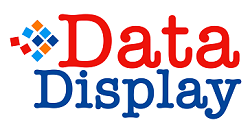
A laser is a mechanism for emitting electromagnetic radiation as light or visible light through a process of stimulated emission. lasitlaser.com is an acronym for photo amplification by stimulated emission.
Increasingly more industries and competition between them will always force them to introduce the latest technology, which is a laser system for many industrial applications including cutting, marking, stamping, embossing and engraving. Will lead to the implementation of. The main difference between a laser marking system and other forms of marking is its unique combination of speed, persistence, and computer-controlled flexibility. The software used in the laser marking system is accessed through the PCI interface card. This sends a digital signal from a computer-based marking or etching file to the motor, directing the laser beam to the laser-marked product.
The lasers used for marking are:
CO2 Laser-Create persistent code for life traceability. This reduces manufacturing costs and makes it easy to integrate with automated systems.
Excimer Laser-Available at the following UV laser wavelengths: 157 nm, 193 nm, 248 nm, 308 nm, and 351 nm. It is mainly used for drilling inkjet nozzles and marking eyeglasses.
YAG Laser-When properly configured, it is most often used as a base platform for producing different wavelengths. The most versatile wavelength is infrared (1064nm). This wavelength is used to mark a variety of materials, including metals, ceramics, composites, and some plastics.
The various types of processes associated with laser marking systems are:
Surface annealing
Surface annealing draws carbon and / or oxides from the base material to obtain contrasting marks. The marking beam produces sharp contrasting lines to the surrounding area with little or no penetration. It is ideal for applications that require a smooth, undamaged surface and contrast. Surface annealing is mainly used for medical implants, bearings, tools, etc.
Surface etching
Surface etching is a function that changes the reflectance of a metal and enhances its contrast by changing the surface finish of the metal. This is one of the most commonly used laser marking techniques, with a penetration depth of less than 0.0001 inches.
Ablation
Ablation is used to create contrast without damaging the base metal. This method is typically done using anodized aluminum, backlit buttons, and painted steel.
Thermal marking
This method works by controlling the heat using various laser parameters such as marking speed, pulse frequency, power and focus. This is mainly applied to certain alloys and results in a color change.
Engraved marking
With this method, the required depth is produced by the vaporization of the base metal. This type of marking is the same as surface etching. It is typically used at depths from 0.0001 “to 0.005”. Repeating the path will increase the depth of the mark.
Special marking
Special marking systems are commonly used in plastics. For some plastics, the contrast can change naturally due to the combination with wavelengths that cause thermal or chemical changes. Additives can also be used in most plastics to achieve different colors. One example of special marking is product traceability. This is the ability for a manufacturer to track a product through a processing procedure and retrack the product to the manufacturer.




